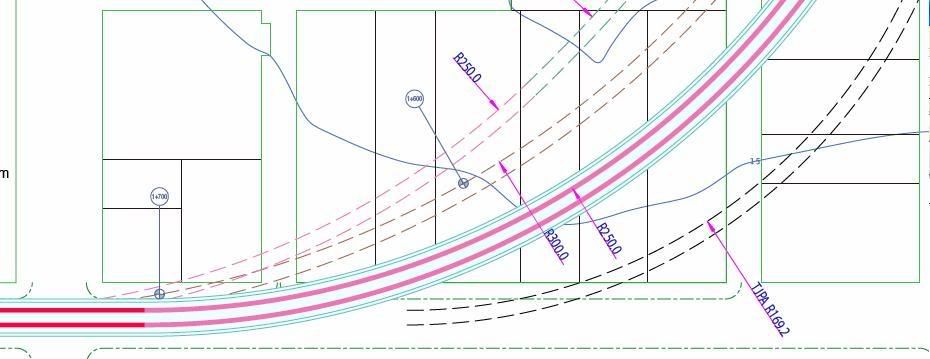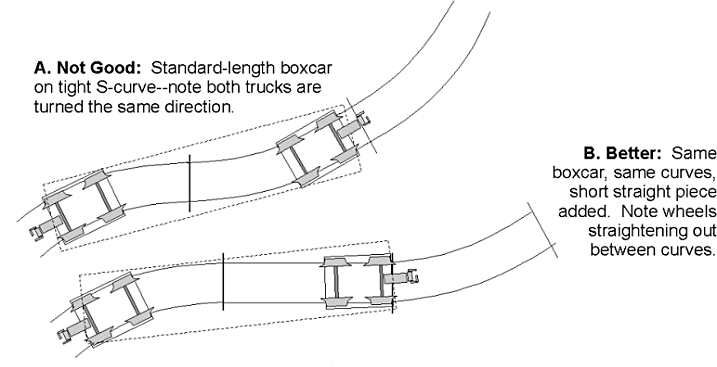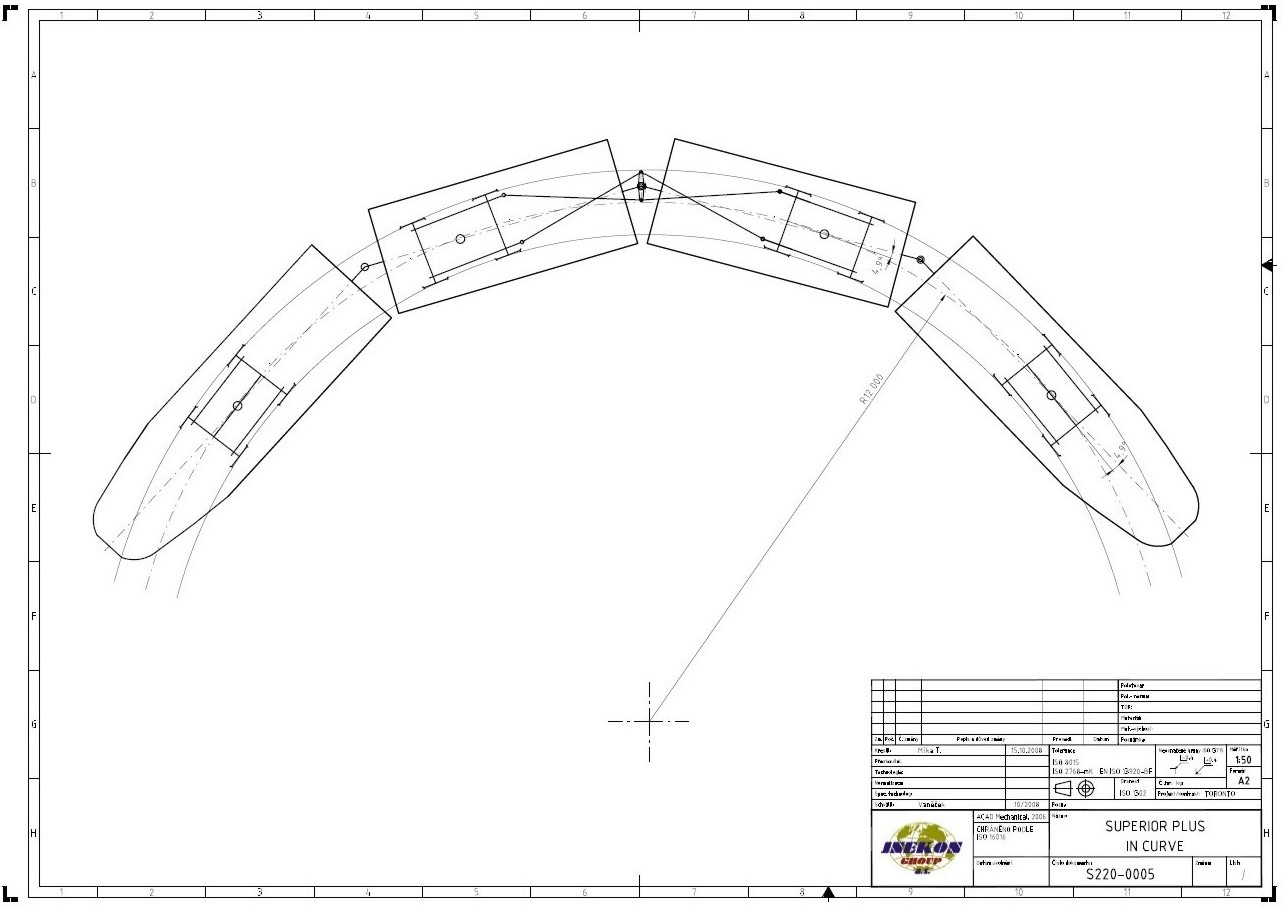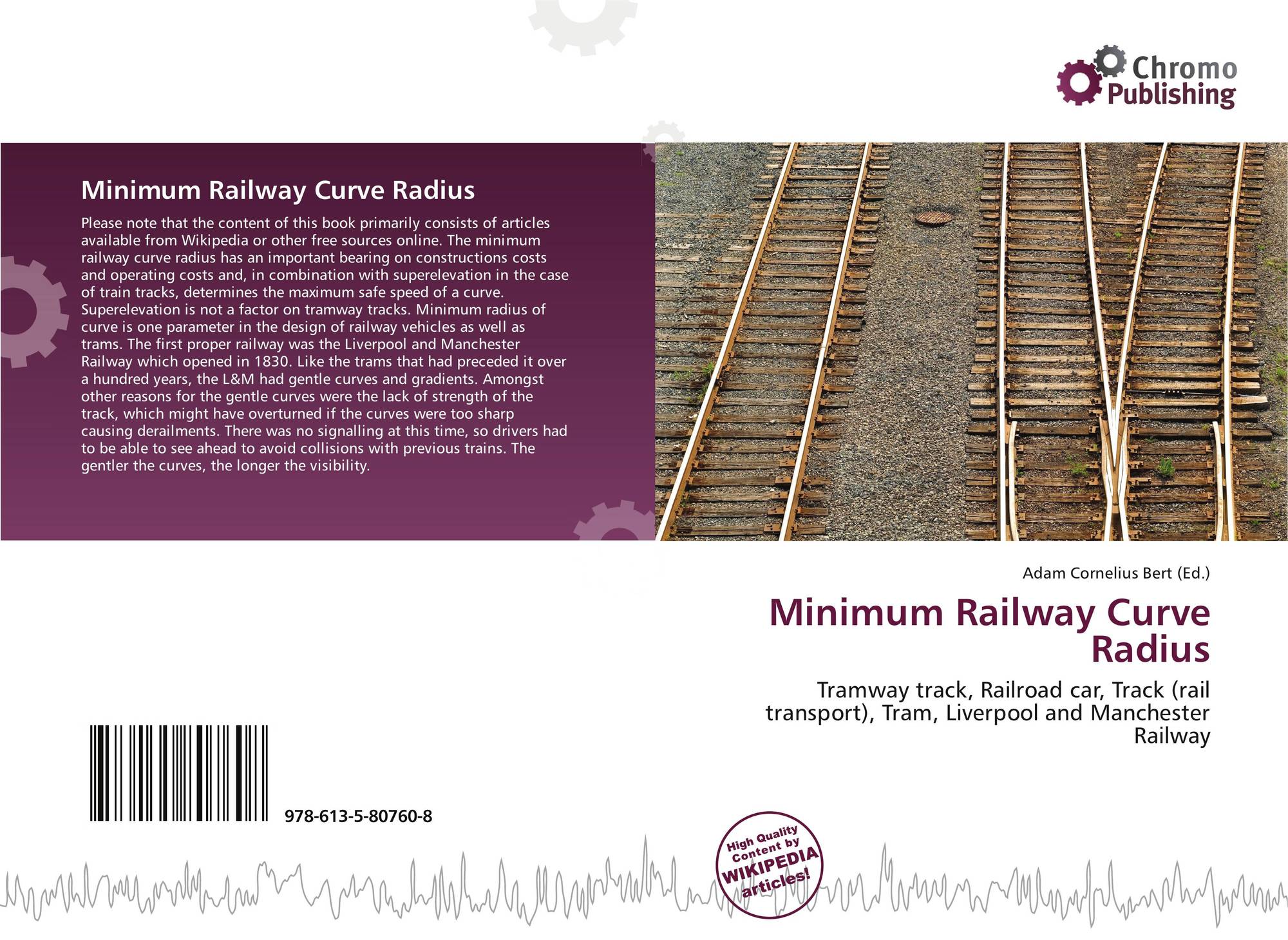Minimum railway curve radius
The radius of a curve ( in the railway system and also curve radius ) is an important parameter for the permissible speed in an arc of a road or railway track. Tight turning radius mean a greater centrifugal force, which is why a track alignment with flatter curves is necessary for higher speeds.
However, this entails increased difficulties in adapting to the terrain of the route, particularly in railways. If the permissible curvature of the rail or road route remains well below that of the contour lines of the terrain, increased costs incurred for the construction of cuttings and embankments.
For about 100 years it has traced out roads so that the straight pieces of Transfer sheets are interposed not pass directly into the corners, but. As such, clothoids are often used so that the curvature of linearly from zero 'increases to the reciprocal of the turning radius. This corresponds to a uniformly increasing the steering angle in a motor vehicle.
At a given radius of curvature R and the speed V also includes a suitable elevation of the curve, in order to ensure sufficient friction and inclination of the vehicle. Also, this excess must increase from zero ( in the line) to the current value in the curve apex with a suitable function to ensure a good driving dynamics. For this increase the clothoid is also used in road, railway lines, however, the cubic parabola.
Rail transport
In rail transport, the spectrum of typical radii of about 30 meters is sufficient ( for trams ) to several thousand meters (for example, new lines of high-speed traffic ).
Local mountain lines have minimum radii of curvature of about 50 to 100 meters ( eg Bernina Railway Wengernalpbahn 45 m, 60 m), with supra-regional importance with a higher expansion velocity is about 200 m (eg Semmeringbahn 190 m). For roads, the minimum radii occur mostly in serpentines ( sweeping).
In Germany (40 ( 7) EBO §) was the recasting of the Railway Construction and Operating Regulations 1967 introduced a new formula for calculating the permissible speed of trains on curves ( with velocity V in km / h, curve radius R in m and elevation above sea level in mm). Thus, the speed limit was increased on curves, while the allowable lateral acceleration of 0.65 to 0.85 m / s ² raised.
Road
Thus, the static friction is not exceeded by the centrifugal force, the following inequality must be satisfied ( on a flat road ): ( μ = 1, on a dry road, the gravitational acceleration g).










